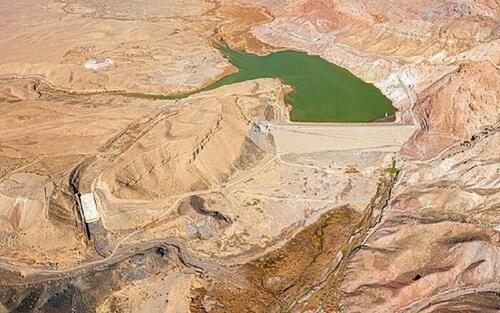Coming off a very 'hot' geopolitical summer which saw Israel and the US attack Tehran and the Islamic Republic's nuclear energy facilities, Iran is now facing yet another immensely threatening crisis amid historic drought: lack of water for the population of 90+ million.
Rainfall has been at record lows, causing reservoirs to be nearly empty, in an already arid Middle East climate. The situation has grown so acute that President Masoud Pezeshkian has warned that if the drought persists for another month, Tehran's water would have to be rationed. But this appears to be happening currently, as no rain is expected for at least the next ten days.

Already Iranians are being urged to conserve water and only use what's available for the most pressing needs. Pezeshkian has actually said something stunning and unprecedented on Monday, though some are describing it as obvious hyperbole:
"If rationing doesn't work," Pezeshkian said, "we may have to evacuate Tehran."
The alarming statement resulted in an avalanche of criticism in Iranian media, also with former Tehran mayor Gholamhossein Karbaschi dismissing the idea as "a joke" and saying that "evacuating Tehran makes no sense at all".
Some regional analysts and officials report an over 90% decrease in rainfall compared with last year. The NY Times summarizes of how dire the situation is:
Iran’s officials have begun rationing water in the capital, Tehran, amid a drought so severe that the president has warned the capital may need to be evacuated.
The country is facing the worst drought in six decades, and major dams are at critically low levels. Water authorities this week said the main dams feeding Tehran, on which more than 10 million people depend, were at 5 percent capacity.
On Sunday, the spokesman for Iran’s water industry, Isa Bozorgzadeh, told reporters that water pressure would be lowered from midnight until the morning “so that we can both reduce urban leakage and create an opportunity for city reservoirs to refill.”
People have in some cases taken to TikTok and other social media to show that faucets in their homes have stopped producing water for hours at a time.
Iranian officials are mulling extreme measures and outside-the-box approaches:
This fall, the Ministry of Energy announced the practice of “cloud seeding,” a weather modification technique that involves dispersing particles like silver iodide into existing clouds to encourage rainfall. However, for it to work, clouds need to contain at least 50 percent moisture, which experts say is not currently the case in Iran.
BBC writes of one vital reservoir, "The manager of the Latian Dam, one of Tehran's main water sources, says it now holds less than 10% of its capacity. The nearby Karaj Dam — which supplies water to both Tehran and Alborz provinces — is in a similarly dire condition."
"I have never seen this dam so empty since I was born," one area resident told Iranian state TV.
Loading recommendations...